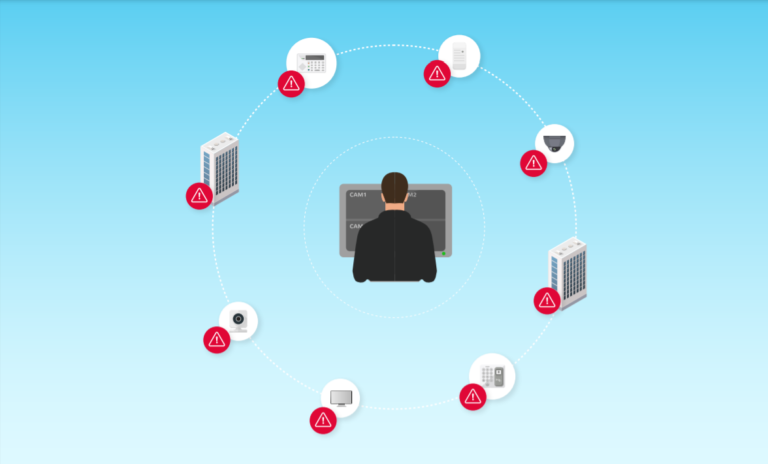
If you’re worried that your organization doesn’t have enough real-time information on its physical security devices and their operational status, then you’re in good company.
We at SecuriThings have spoken with hundreds of physical security professionals, and time after time they tell us that a lack of visibility is the pain point that most concerns them. But while physical security teams are usually aware of that lack of device visibility itself, they often aren’t sure how to address the problem – and in many cases they don’t even know where their gaps in visibility are. No one wants to be in a situation where the first thing they know of a device issue is during or in the aftermath of a security incident – but all too often that is the case.
These blind spots are a serious problem, because physical security teams that lack comprehensive visibility face a real risk that their devices will be offline when they’re really needed, with potentially disastrous consequences. No less concerning, their physical security devices could have cybersecurity vulnerabilities that they don’t know about. And they could unknowingly fail to comply with relevant laws and regulations, putting them at legal risk.
How can you overcome those blind spots and achieve enterprise-ready physical security? We recently published a new guide to help organizations do just that. You can download it now here.
The 5 Key Pillars of Device Visibility
At the heart of our new guide is a breakdown of five key aspects of visibility that all physical security teams need: asset mapping, device health and performance, cybersecurity, compliance, and network issues. Walking you through each of these types of insights, the eBook outlines hot to make sure you have all the information you need to keep your physical security devices running reliably and securely. In addition to helping you improve your overall security, the guide is designed to help you protect your organization from legal risks.
Download it now to learn:
- Why is comprehensive visibility into your physical security devices and their surrounding ecosystem a critical requirement for enterprise-ready physical security, and what’s at stake if you lack adequate visibility?
- Why do many organizations find it so difficult to generate a comprehensive map of all their physical security devices, and how can innovative technologies help you address this need?
- How can you use real-time insight into device performance to minimize the risk of downtime, and why is it so important to supplement this insight with automation capabilities?
- How serious and widespread are the cybersecurity risks that can stem from inadequately managed physical security devices, and how can enhanced visibility enable you to steer clear of those dangers?
- How does a dynamic legal landscape make it critically important to have comprehensive visibility to ensure that your physical security devices are compliant, and how does the supply chain make this particularly challenging?
- Why isn’t it enough to have insight into your physical security devices, and how does having a wider view of their ecosystem help you strengthen your physical security?
All five of the insight types covered in the guide can make a powerful difference in helping you ensure that your physical security devices are running reliably and securely, without creating legal risks for your organization. By ensuring that you have an efficient way to keep track of those insights around the clock, you can bolster your overall security posture, while also protecting your organization from potentially expensive legal exposure.
For a breakdown of the five critical types of insights into physical security devices that all organizations need, and to learn about key steps you can take to get those insights, check out our new guide right here.




